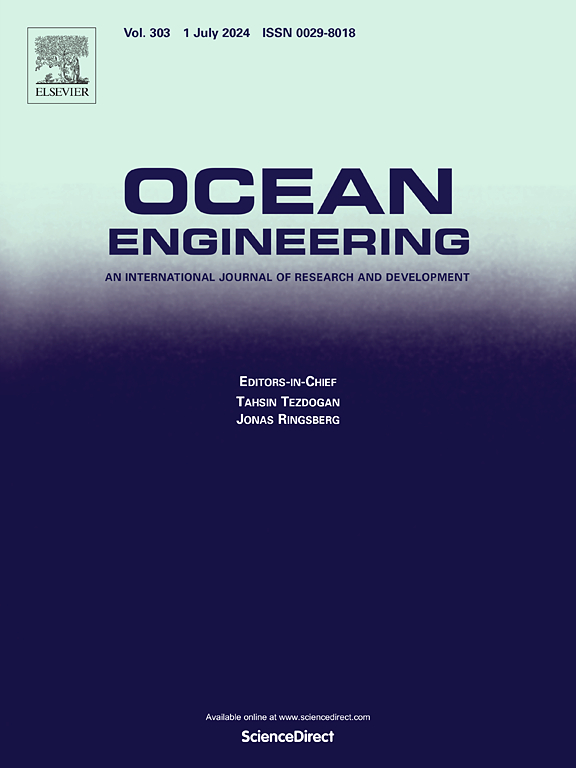Experimental investigation of the dynamic characteristics of a barge-type floating offshore wind turbine under wind and wave condition
IF 4.6
2区 工程技术
Q1 ENGINEERING, CIVIL
引用次数: 0
Abstract
With the rapid development of modern wind power generation technology, wind energy has become the most promising renewable energy in the world. At present, wind power development has transformed from land-based to offshore and is committed to further expanding to offshore deep-water areas. Floating offshore wind turbines (FOWTs) are currently the most promising new technology for developing offshore deep-water wind energy and have become a research hotspot in the offshore wind power field globally. Based on the working characteristics of large-scale FOWTs and in combination with the design experience of FOWTs, this study proposes a barge-type floating platform and mooring system suitable for a 60 m water depth to support the Technical University of Denmark (DTU) 10 MW wind turbine. The platform features a four-monopod structure paired. The barge-type floating platform has the advantages of having a simple structure, convenient manufacturing and a better response related to the stability (hydrostatics) of the platform under operational and extreme conditions. The hydrodynamic characteristics and coupled motion response under various wind and wave conditions of the structure were analyzed and verified by physical model tests. Key findings include the effectiveness of geometric and Froude similarity laws in model design, the critical role of low-Reynolds-number blade modifications in achieving aerodynamic thrust similarity, and the alignment of motion responses with DNV standards under extreme conditions. This research provides a robust experimental framework and practical insights for optimizing barge-type FOWT designs.
驳船式浮式海上风力机风浪作用下动力特性试验研究
随着现代风力发电技术的飞速发展,风能已成为世界上最具发展前景的可再生能源。目前,风电开发已由陆上向海上转型,并致力于进一步向近海深水区拓展。浮式海上风力发电机组是目前最具发展前景的海上深水风能新技术,已成为全球海上风电领域的研究热点。根据大型浮式平台的工作特点,结合浮式平台的设计经验,提出了一种适合60 m水深的驳船式浮式平台及系泊系统,用于支撑丹麦技术大学(DTU) 10 MW风力发电机组。该平台采用四单脚结构配对。驳船式浮动平台结构简单,制造方便,在作业和极端条件下对平台的稳定性(静力学)有较好的响应。分析了结构在各种风浪条件下的水动力特性和耦合运动响应,并通过物理模型试验进行了验证。主要发现包括几何和弗劳德相似定律在模型设计中的有效性,低雷诺数叶片修改在实现气动推力相似方面的关键作用,以及极端条件下运动响应与DNV标准的一致性。该研究为优化驳船型fot设计提供了可靠的实验框架和实践见解。
本文章由计算机程序翻译,如有差异,请以英文原文为准。
求助全文
约1分钟内获得全文
求助全文
来源期刊

Ocean Engineering
工程技术-工程:大洋
CiteScore
7.30
自引率
34.00%
发文量
2379
审稿时长
8.1 months
期刊介绍:
Ocean Engineering provides a medium for the publication of original research and development work in the field of ocean engineering. Ocean Engineering seeks papers in the following topics.
 求助内容:
求助内容: 应助结果提醒方式:
应助结果提醒方式:


